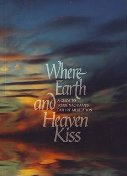Photo (c) Dovid Sears 2011
Some
Speculations by Dovid Sears
In the
Introduction to the Tikuney Zohar, the Prophet Elijah describes how the
various sefiros (Divine powers) correspond to the human form (“chesed
/ kindness is the right arm, gevurah / might is the left arm,” etc.),
and then states that nevertheless G-d transcends them all, as well as all
Divine Names: “There is none who can know You at all… Each sefirah has a
specific Name… However, You have no specific Name, for You permeate all Names,
and you are the perfection of the all (‘shelimu de-khulhu,’ in
Aramaic)…” The Tikuney Zohar concludes that all powers and emanations, and
all Divine Names, are related to the world and therefore limited, while the
Divine Essence is indescribable and beyond all limitation entirely. (Also see a
similar teaching from the Baal Shem Tov cited in Ohr ha-Meir, Shoftim, that
G-d’s “true greatness” transcends His Essential Name [YHVH], which exists only
for the sake of creation.)
This may be
related to a cryptic statement of the Rebbe preserved in Reb Avraham b’Reb
Nachman’s Chokhmah u-Binah (printed in Kokhvey Ohr and Siach
Sarfey Kodesh I, 413): “Ich hobb shum nomen nisht—I have no name
whatever.”
That is, just as
Hashem transcends all Names and Divine manifestations, so does the tzaddik transcend
his own “personality” and presence in the world. The essence of being remains
unmanifest and nameless.
The Rebbe also teaches
that “the name is the self.” Thus, mesirus nefesh, which is usually
understood to mean martyrdom or self-sacrifice, also may denote the defamation
of one’s name (Likutey Moharan I, 260). Since the name is the “self,” it
may be subject to defamation—or its opposite, glorification or adulation.
In Likutey
Moharan I, 52 (“Ha-nei’or ba-Laylah”), the Rebbe outlines the path
of hisbodedus and the spiritual realization or breakthrough that is its
goal. He explains that in truth, everything proceeds from and is nullified within
the Mechuyav ha-Metziyus (“Imperative Existent,” a term borrowed from
Maimonides, meaning “Absolute Reality,” or the indestructible essence of
being”—which is Divinity). In his recent collection of chiddushim and bi’urim
on Likutey Moharan, “Mayim Amukim” (ad loc.), Rabbi Shmuel Moshe Kramer
of Yerushalayim equates this with the mystical experience often related to the
verse “Ein ode milvado” (Deut. 4:35, according to the interpretation of Shnei
Luchos ha-Bris and the Maharal of Prague; also cf. Chullin 7b, Nefesh
ha-Chaim III, 12-13, and elsewhere)—that is, despite all appearances, nothing
but Godliness truly exists. On that higher plane, what names may we invoke? Who
and what are we to invoke them at all?
Also in the
above-mentioned Torah 260, the Rebbe describes the souls of Israel as “chelkey
ha-Shekhinah / portions of the Divine Presence,” and individually with the
phrase “chelek HaVaYaH (YHVH) mi-ma’al mamash … an actual portion of
Divinity above” (which interestingly is also the language of the Tanya,
as based on the 17th century kabbalistic work, Shefa Tal). This
seems to be a mystical reading of the verse from Deuteronomy, “chelek HaVaYaH
(YHVH) amo… the portion of Hashem (YHVH) is his people…” If so, this
“actual portion of G-dliness above” is who we really are, collectively and
individually.
In Likutey Moharan
II, 82, the Rebbe cites the retort of Moshe to the rebellious Israelites in the
wilderness, “Vi-nachnu mah—and what are we?” The Rebbe interprets this as
an expression of “no-ego,” no “self” to impose on others, or to defend from
insult or opposition. (And he recommends this model to us all when we are faced
with opposition and conflict.) Thus, the concept of a solid or fixed self is negated.
Elsewhere, the
Rebbe describes both the tzaddik and the Jewish people as personifying the
Divine Name (Likutey Moharan II, 66, 67). For as Chazal state, “Hashem
meshutaf bi-shmeinu … G-d’s Name is bound up with our names” (Rashi on Numbers 26:5). Given this principle, it would seem that our names are somewhat
provisional. And as the Tikuney Zohar observes, from the Divine
perspective, Hashem transcends all Names.
Yet another relevant
source is Sichos ha-Ran 40, a Chanukah teaching that I once translated for
this website as “The Wheel of Transformation.” There, the Rebbe describes the
Holy Temple as being like the dreidel or toy top which children spin on
Chanukah, because it embodies the principle that everything in creation is
constantly changing, and nothing retains any permanent existence. (See that
teaching for how these symbols specifically connect.)
Toward the end
of that teaching, the Rebbe mentions that the prima materia (“hyle”), which
is the “nothingness” from whence all creation in all of its diversity comes
forth, is called “chokhmah.” As in other kabbalistic works, he parses chokhmah
as koach-mah, the “power of nothingness?”
This is the same concept as found in Torah II, 82, cited above, and Moshe’s
rhetorical question, “Vi-nachnu mah? What are we?” (Meaning: “We are
nothing.”)
Therefore, the Big
Question is: what is the “self?”
And the person to
whom this question expressly must be addressed is oneself—whoever that may be!






































